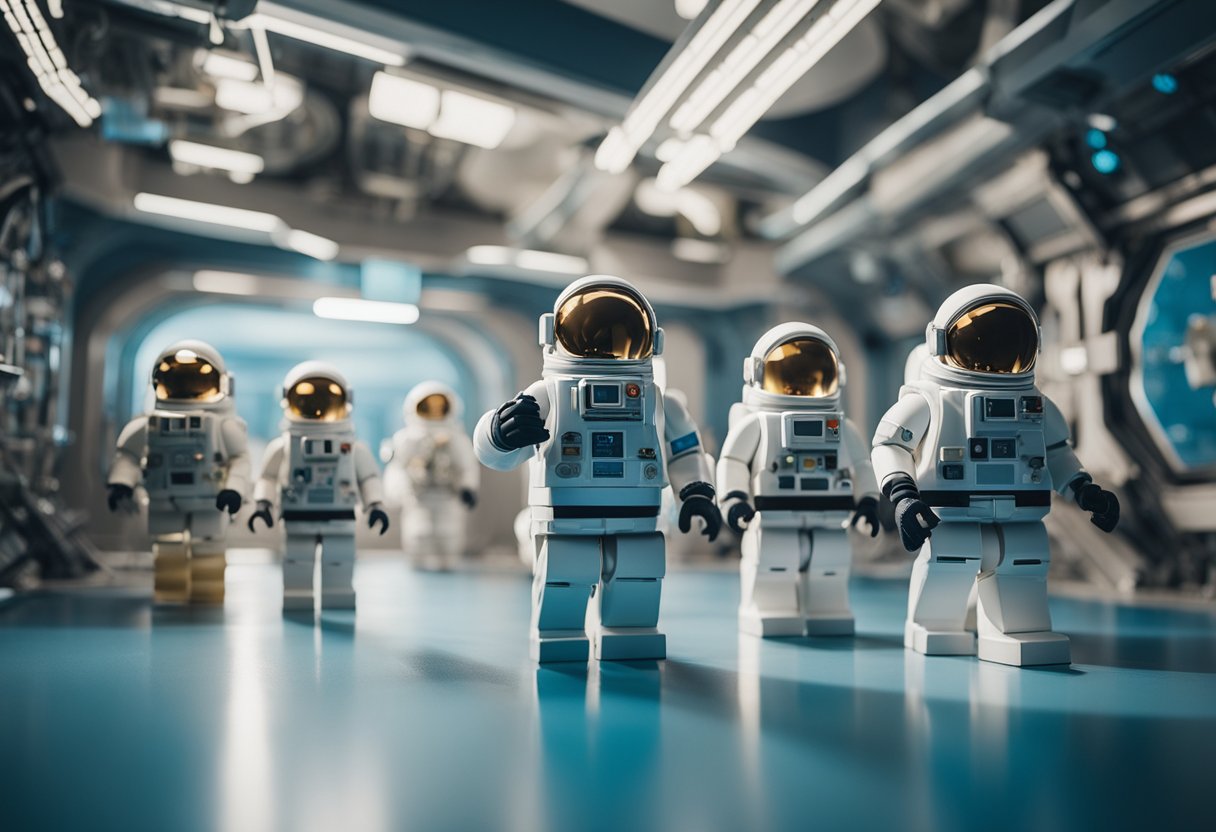
Astronaut Demographics – The demographics of astronauts have evolved significantly since the early days of space exploration. Initially populated by a homogeneous group predominantly composed of military test pilots, the astronaut corps has seen increasing diversity over the years. Recruitment now emphasises a broader range of skills and backgrounds, reflecting the multifaceted demands of space missions. Active astronauts hail from a variety of professions, including scientists, engineers, and educators, which contributes to a rich pool of expertise for space exploration efforts.
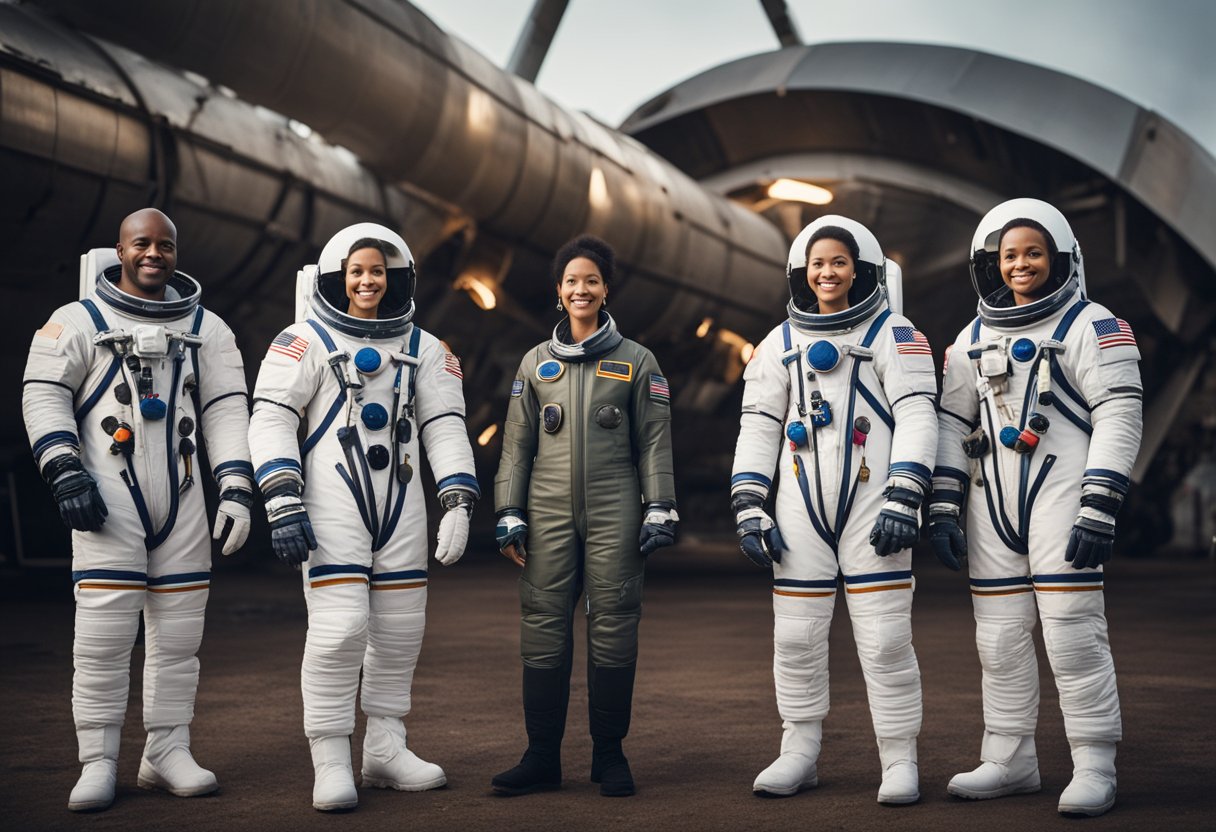
One of the most striking changes in astronaut demographics has been the shift towards gender balance. From an era where male astronauts constituted the overwhelming majority, there’s now a conscious effort towards achieving equal representation. This can be seen in the balanced selection of recent astronaut cohorts. Moreover, the international representation among astronauts has widened, with many more countries participating in space exploration and contributing to the astronaut pool.
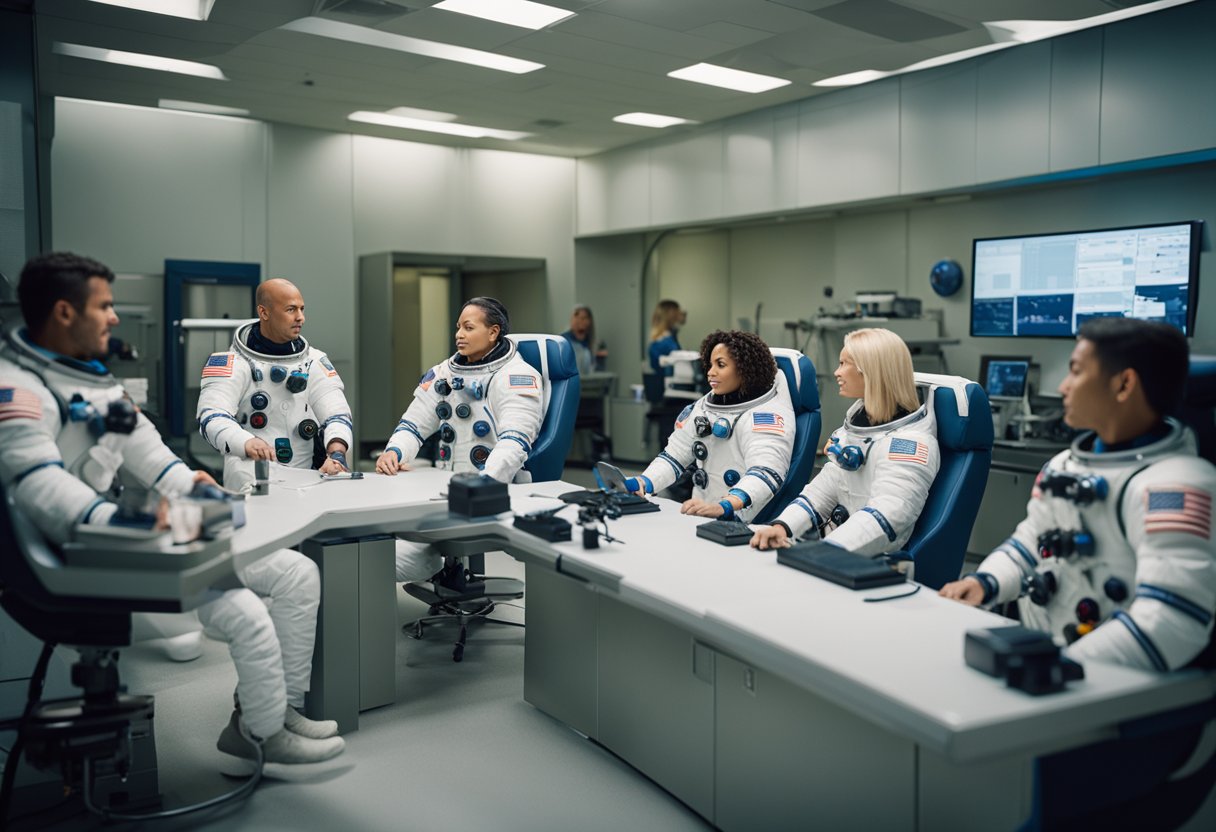
The astronaut selection process is a meticulous journey from the initial application to rigorous training. The path is designed to filter and prepare the best candidates for the unique challenges of space missions.
We begin by inviting applications from those fascinated by the final frontier, aspiring to contribute to our understanding of the cosmos. Eligibility criteria require applicants to have a background in physical science, engineering, mathematics, or similar fields, laying the foundation for the complex tasks they will undertake. Educational qualifications are critical, with an emphasis on a degree in a science or engineering discipline. The process also scrutinises each applicant’s medical and physical fitness. History has shown us that more than 12,000 individuals applied for a coveted spot, demonstrating the intense interest in space exploration.
To be considered, candidates must also exhibit superior mental and physical capabilities. Exceptional problem-solving skills, the ability to work in a team, and a psychological profile that showcases resilience are paramount. Our examinations extend to their physical health; candidates undergo rigorous medical examinations to ensure they can endure the unique stressors of spaceflight.
Our chosen astronaut candidates embark on a comprehensive training programme designed to equip them with the skills necessary for space missions. The programme covers extensive training in spacewalks, robotics, and operating spacecraft, like the ones documented on SpaceVoyageVentures.com, to prepare for possible future tourism trips as well as current and nearly available missions.
Physical fitness is a cornerstone of an astronaut’s preparation. We ensure that our candidates are prepared to face the physical demands of space by maintaining a strict fitness regimen, which includes swimming, strength training, and cardiovascular workouts.
Additional survival training courses are imperative for the unforeseen events that may transpire in the unyielding vacuum of space. We also place significant emphasis on teamwork and conduct simulations and exercises that foster effective communication and collaboration amongst the crew, a critical aspect of mission success.
Understanding the demographics of active astronauts is essential as we look at representation in space exploration. The various facets of this demographic landscape include gender distribution, age range, and ethnic diversity.
The ratio between women and men in the astronaut corps is gradually moving towards a more balanced figure. According to the Astronaut Fact Book, the gender distribution among active astronauts has reached an equilibrium, with an equal percentage of active astronauts being women and men.
The active astronaut group entails individuals from a wide array of age groups. While specific age distribution data is not immediately available, historically, the average age for a first-time astronaut has been around 40 years old. This indicates a mix of both seasoned professionals and younger individuals who bring fresh perspectives to the programme. Further details about the age range of current astronauts may be found in comprehensive reports such as the NASA Astronaut Fact Book.
We are witnessing an increase in ethnic diversity within the astronaut corps, reflecting global efforts to ensure a more inclusive space program. Representation from various ethnic backgrounds is pivotal as we envisage a future where humanity’s collective endeavour into space is mirrored by the diversity of those who explore it. For more precise figures and information on diversity, interested parties can review agency publications or consult the extensive analyses available in scientific literature, such as those found on ScienceDirect.
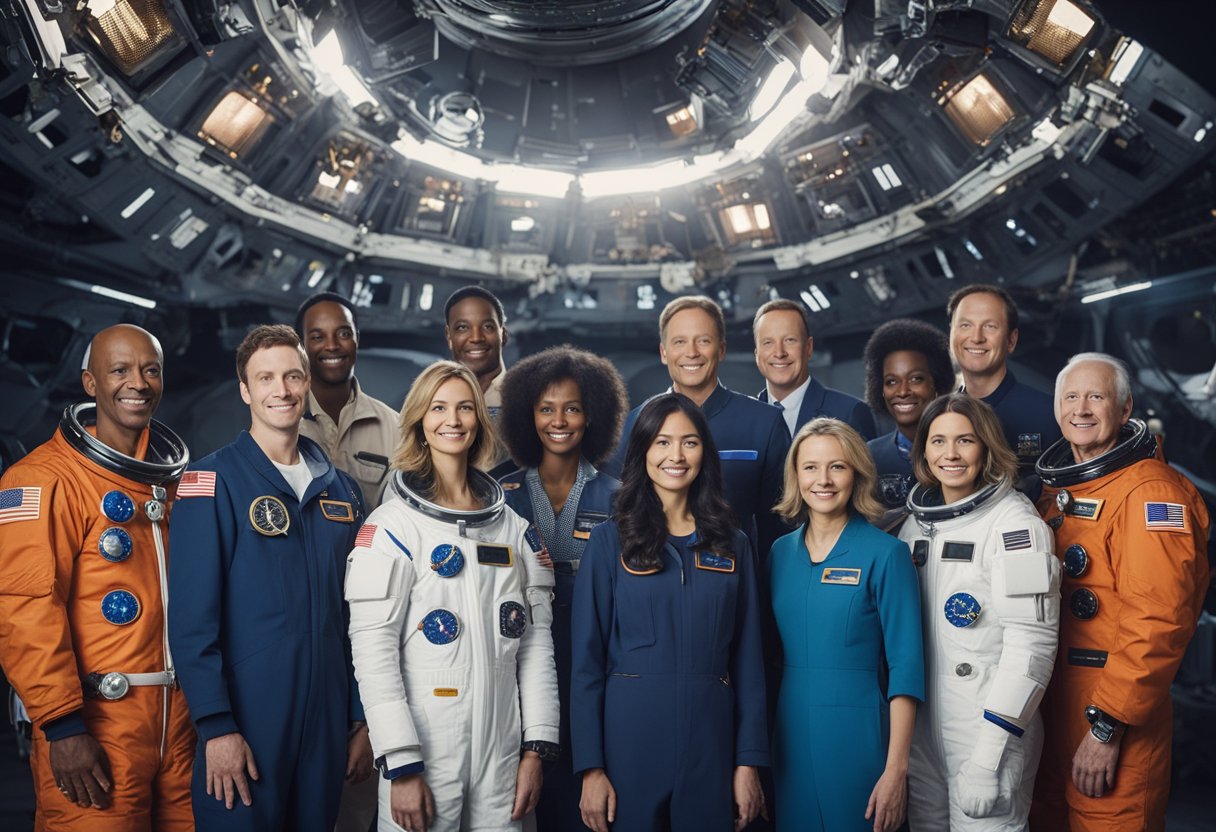
In our analysis of astronaut demographics, we’ve observed a distinct pattern of international collaboration and representation within space agencies. This manifests in expeditions to the International Space Station and through each agency’s orbital missions.
NASA has continually expanded its astronaut corps to include a diverse array of professionals from various backgrounds and nations. Notably, the demographic shifts since 1959 reflect an increase in international participants. Our astronauts have not only conducted missions in low Earth orbit but have also been integral to multinational crews aboard the International Space Station, highlighting the strength of international cooperation in space exploration.
From Russia, Roscosmos cosmonauts have been at the forefront since the era of Yuri Gagarin. They’ve shown a rich history of significant achievements and have long been a crucial part of the ISS’s permanent crew. Their expertise in long-duration spaceflight has immensely contributed to our collective knowledge of living and working in space.
The Chinese National Space Administration (CNSA) has developed an impressive crewed spaceflight program. The term ‘taikonauts’ refers to their astronauts. While the Chinese space program has been largely independent, it has made notable strides in placing taikonauts into orbit. Their missions, although not directly contributing to the ISS crew, demonstrate China’s growing capabilities and underline the expanding landscape of international spacefaring nations.
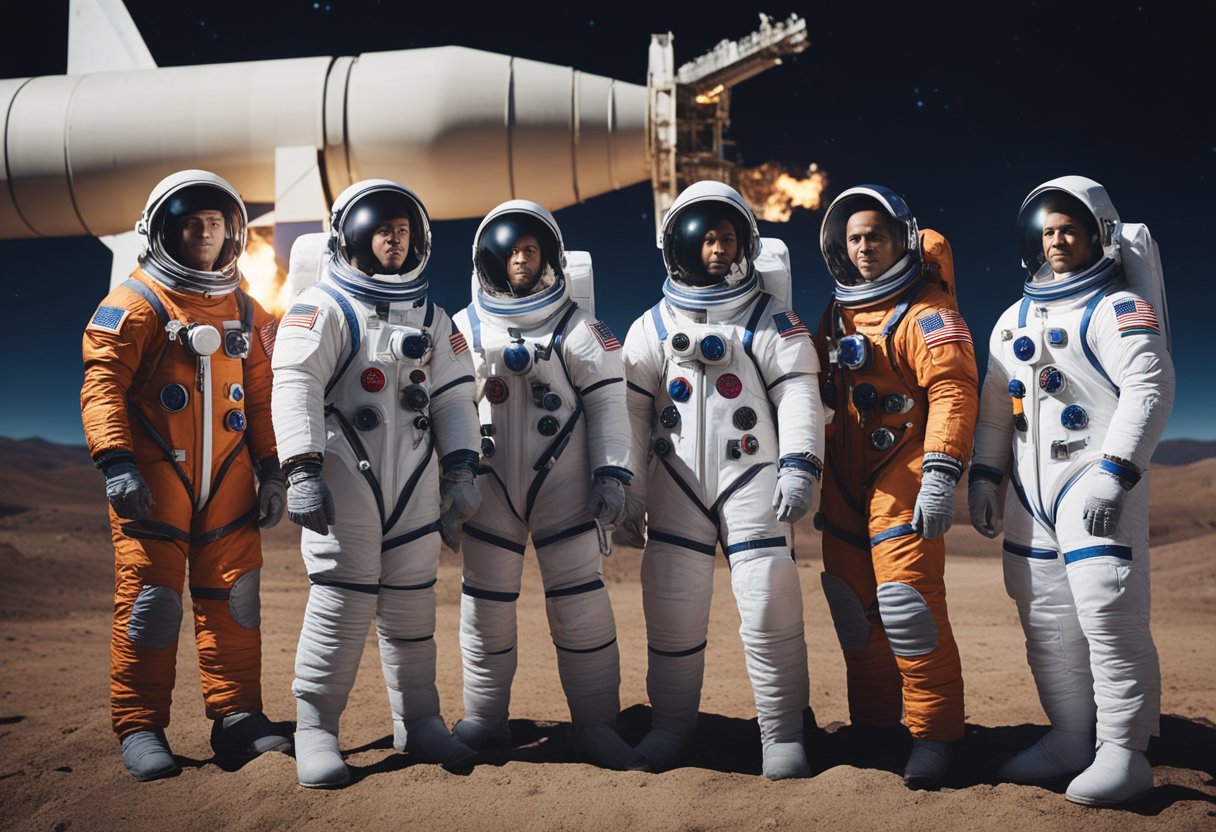
In this section, we’ll examine the diverse trajectories individuals take to become astronauts. These range from military backgrounds to civilian roles and encompass the pivotal contributions of scientists and engineers to space exploration.
Many astronauts begin their careers in the military. We’ve seen a significant proportion of military astronauts transition into NASA. Their rigorous training, discipline, and expertise in aeronautics or test piloting often align well with the demands of spaceflight. Historically, agencies like NASA have relied on the military for recruiting candidates with the necessary skills for handling complex missions.
Civilian involvement in space missions is becoming more commonplace. With private companies like SpaceX and Blue Origin collaborating closely with NASA and offering commercial spaceflight, there are increasing opportunities for civilians. Special initiatives and projects often seek professionals with unique skills or creative backgrounds to contribute to space exploration in unconventional ways. Moreover, platforms like SpaceVoyageVentures.com are broadening public awareness and excitement for civilian roles in space tourism, highlighting future possibilities outside traditional agency channels.
Scientists and engineers are integral to the success of space missions. With a profound understanding of science and technology, these professionals are essential for innovation and problem-solving in space. They contribute significantly as mission specialists, utilising their expertise to conduct crucial research and experiments. Space agencies across the globe continuously seek out the best scientific minds and engineers to push the boundaries of what is possible in our exploration of the cosmos.
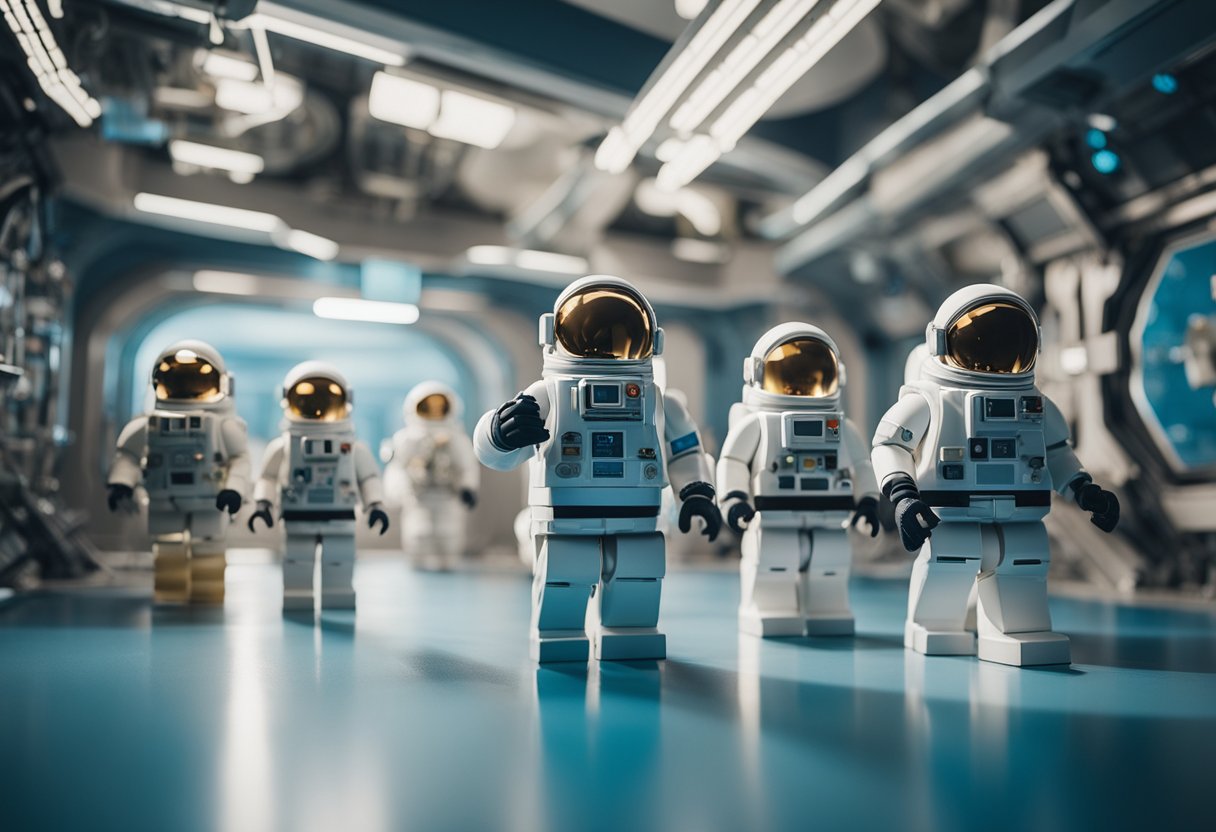
When we speak of astronaut demographics, it’s imperative to acknowledge how the unique conditions of space impact their psychological and physical health. Astronauts encounter various challenges while adapting to microgravity, and thus, comprehensive countermeasures are crucial for their resilience during missions.
Astronauts must acclimatise to the microgravity environment of space, which poses significant medical challenges. The human body is accustomed to Earth’s gravity; hence, weightlessness can lead to muscle atrophy and bone density loss. Space medicine is a specialised field that addresses these issues, aiming to understand and manage the risks associated with human spaceflight. For instance, venous thrombosis has been observed in astronauts, linked to altered blood flow in low-gravity conditions.
Additionally, the closed environment and isolation can affect astronauts’ mental health, requiring psychological support systems in place.
We implement a range of countermeasures to protect astronauts’ health on missions. Countermeasure exercises, such as resistance and aerobic training, are essential to mitigate the deleterious effects of microgravity on the musculoskeletal system.
Exposure to radiation is another serious concern in space. Protective shielding aboard spacecraft and the International Space Station, along with operational procedures, aim to minimise radiation doses received by astronauts. Our understanding of radiation effects continues to progress through ongoing research and monitoring.
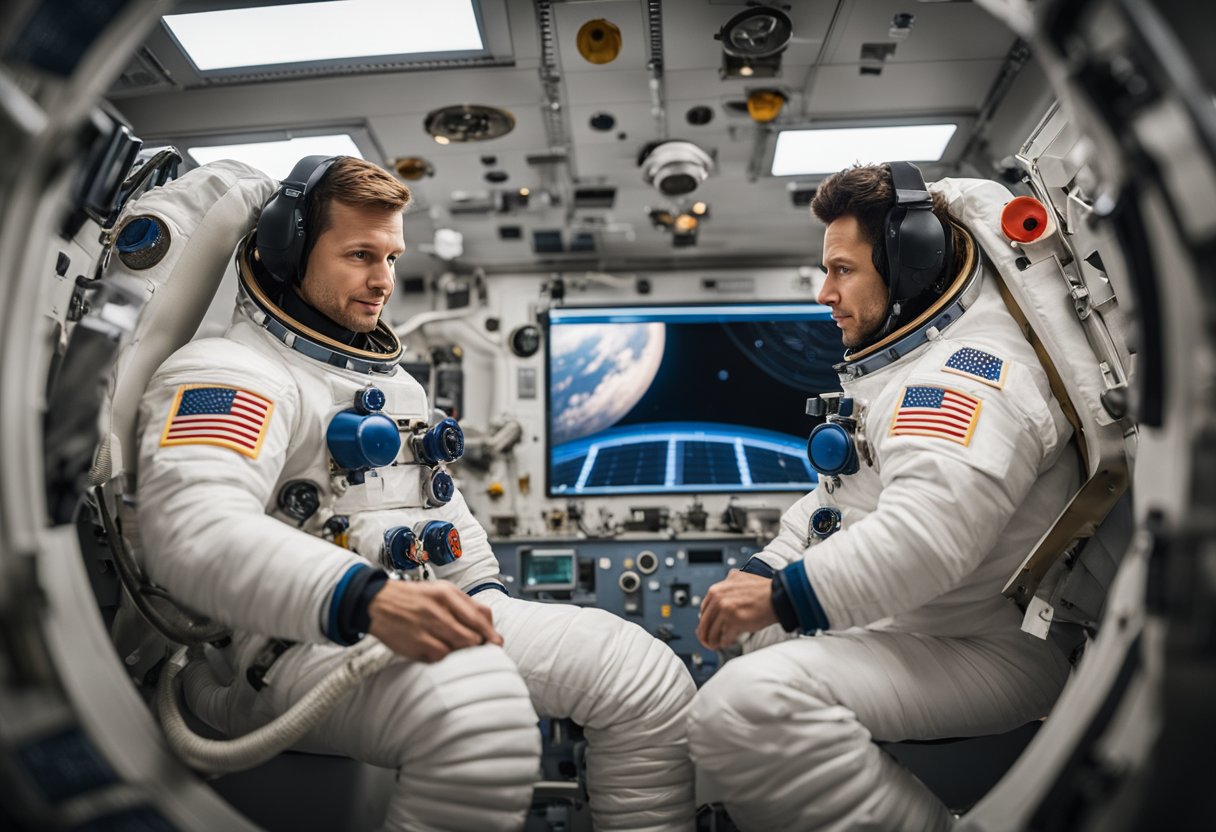
In the journey to becoming an astronaut, rigorous education and training are paramount. Candidates must possess a strong educational foundation in specific scientific disciplines followed by intensive training to prepare for the demanding environment of space.
Most astronauts begin their careers with a solid educational background from recognised universities. Education is crucial, with a focus on degrees in engineering, biological science, physical science, or mathematics. To be considered, U.S. citizens must typically have at least a bachelor’s degree in one of these fields from an accredited institution. Advanced degrees are often favoured and can enhance a candidate’s prospects.
Upon meeting the education prerequisites, prospective astronauts may apply to the Astronaut Candidate Training Programme. Here, candidates undergo a comprehensive training regimen that includes survival training, technical skills, and simulations of the space environment. Our aim is to ensure each candidate is equipped with the competencies required for the rigours of spaceflight. This program is indispensable in shaping the astronauts’ ability to conduct missions safely and effectively.
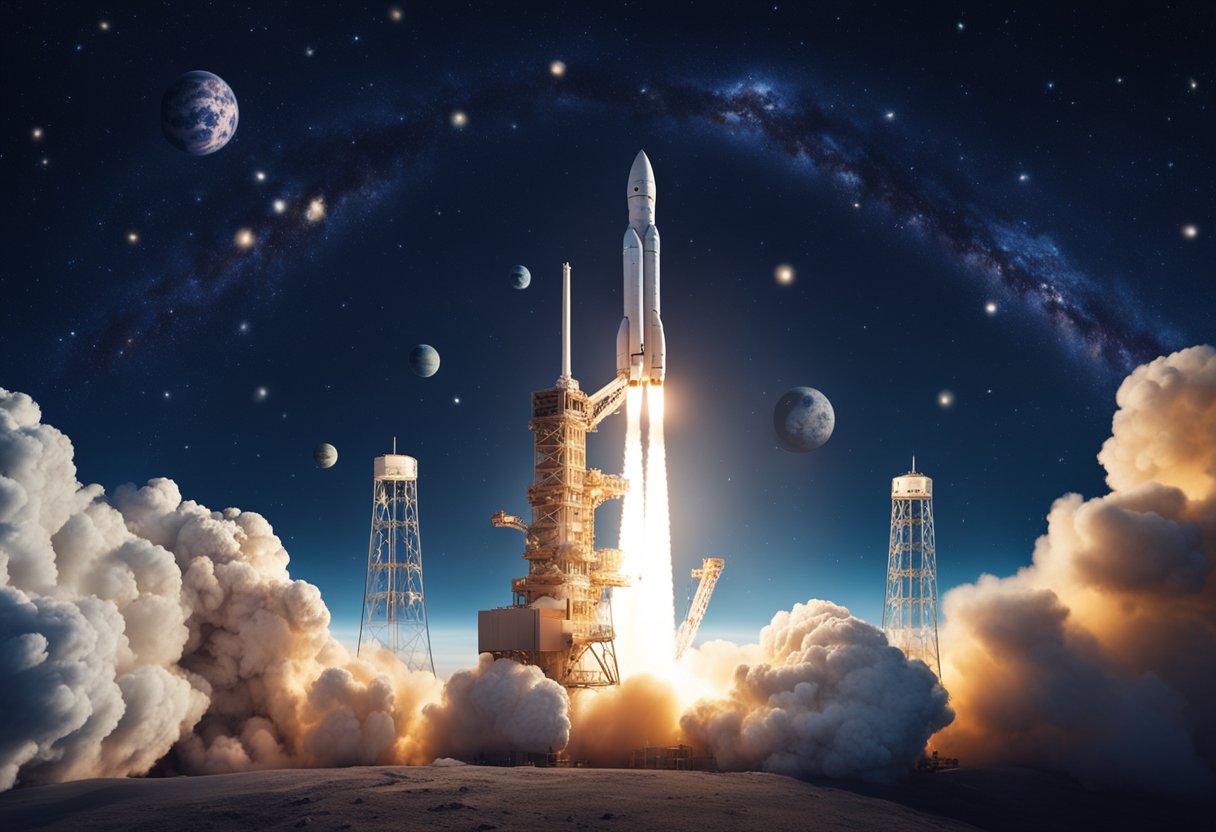
In this section, we’ll explore the pivotal roles of Moon and Mars missions in advancing our understanding and the significant health implications associated with long-duration spaceflight.
The quest to set foot on other celestial bodies has led us from the lunar surface to the dusty plains of Mars. As exploration-class missions escalate, so too does the complexity of these ventures. The Moon serves as a crucial stepping stone; with recent expeditions geared towards establishing a sustainable human presence, these missions aim to utilise the lunar environment as both a scientific laboratory and a gateway to deeper space exploration. Our endeavours on Mars are characterised by robotic rovers and landers that have preceded human missions, laying the groundwork for future exploration and potential colonisation.
As we extend our reach into space, the spaceflight duration inherently increases. The human body is subjected to unique stressors in the microgravity environment of space, prompting thorough research into the physiological changes astronauts endure. To prepare for exploration-class missions, emphasis is placed on the medical challenges and adaptive strategies crucial for long-term human survival and performance in space. Through SpaceVoyageVentures.com, there is a parallel surge of interest in space tourism, highlighting the strides we’ve made in making space more accessible and the future possibilities that await us beyond Earth’s orbit.
Our understanding and capabilities in space exploration continue to grow, driving us to achieve extraordinary feats on the Moon, Mars, and beyond.
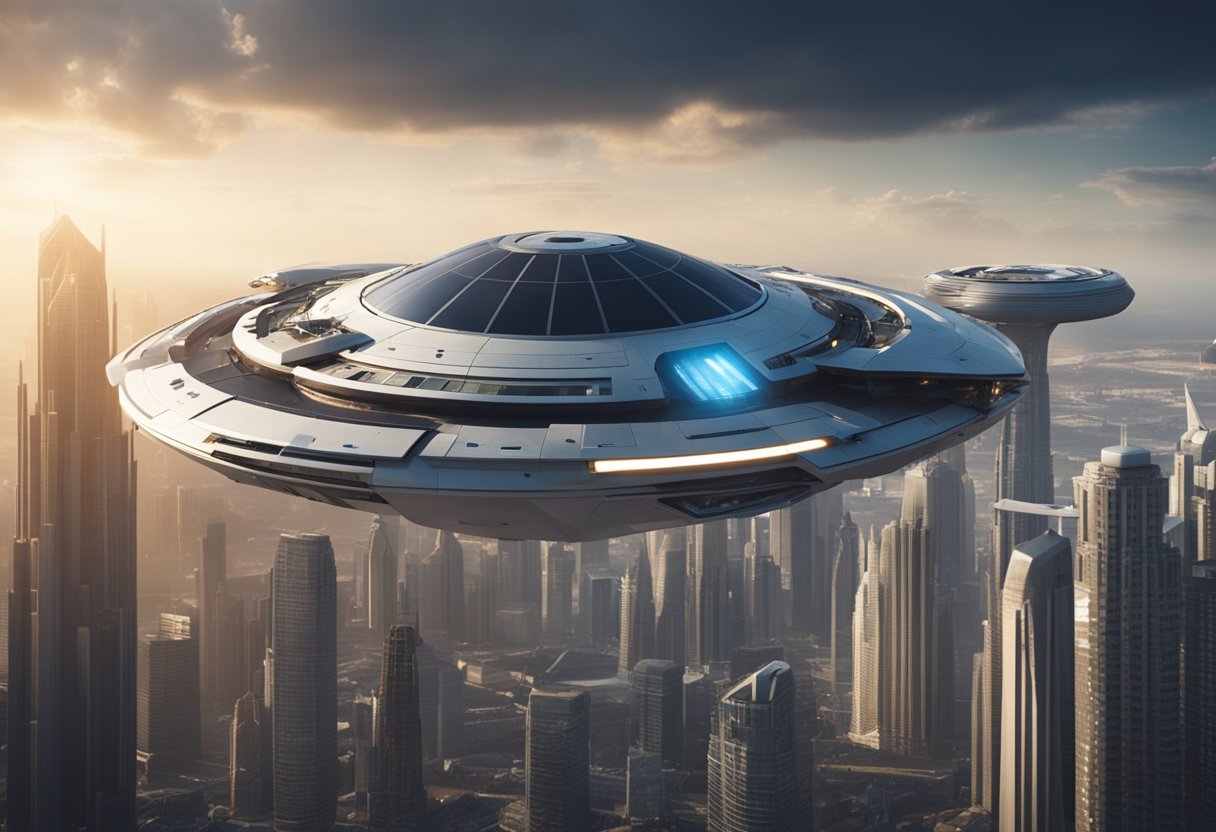
In this section, we explore the advancements in space vehicles and their impact on astronaut demographics through technologies developed during the Space Shuttle Program.
The evolution of space vehicles has been paramount in shaping the experience and makeup of astronauts. Initially, spacecraft were rudimentary vessels, but today they encapsulate cutting-edge technology. For example, the Johnson Space Center in Houston, Texas, has been instrumental in pushing the boundaries of space vehicle sophistication. This centre has developed vehicles capable of sustaining life in the harsh environment of space, thereby expanding the pool of individuals who can participate in space exploration.
The Space Shuttle Program, a significant leap in technology, increased astronaut diversity by providing a reusable transport system to and from Earth. The shuttles facilitated prolonged missions and more complex tasks in orbit. The development of the Space Shuttle fleet, with orbiters like the renowned Atlantis and Endeavour, allowed for a broader range of experiments and international collaboration, which in turn influenced the demographics of the astronaut corps by necessitating a broader range of skills and expertise.
For those interested in the intersection of public engagement and space vehicle technology, SpaceVoyageVentures.com is a resource documenting the current and near-future possibilities for space tourism, highlighting how spacecraft advancements are opening doors for new astronaut profiles.
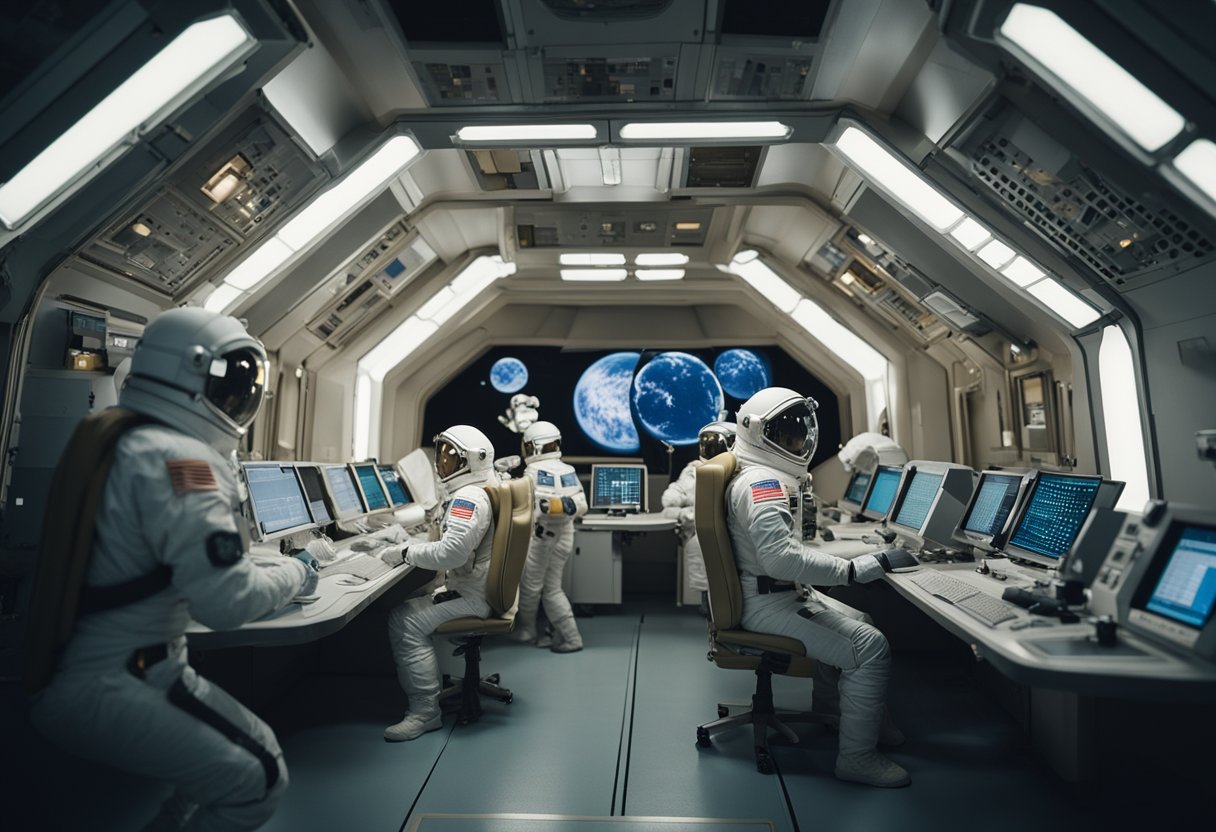
Within NASA, astronauts transition into various roles that extend beyond spaceflight missions. Our focus here is on administrative astronauts who often hold significant management roles and the critical contributions to spaceflight research and development by astronauts and specialists.
Administrative astronauts are pivotal in the operational and strategic management of NASA’s manned space program. These individuals, often with first-hand spaceflight experience, channel their understanding into the leadership and administration of the agency. Among them, management astronauts—a term representing former astronauts who now take up leadership roles—ensure the seamless execution of the space program’s objectives.
Astronaut biographies reveal that these leaders may serve across several capacities. For example, Group 16’s Alvin B. Drew utilised his expertise as Director of Operations at the Gagarin Cosmonaut Training Center, demonstrating how astronaut experience is invaluable in cross-national collaborations. Group 19 and Group 20 alumni similarly ascend into these administrative roles, influencing the present and future frameworks of space exploration.
The desire to expand our knowledge of space requires persistent research and development, which astronauts actively participate in, both in orbit and upon their return. Payload specialists, for instance, are often researchers with specific expertise important to particular shuttle missions. They are essential for the development of experiments conducted in microgravity conditions.
Our involvement in space research has evolved significantly as we progressed from Group 18 to Group 22, with ongoing development in different aspects of space technology and research. With each new group, fresh perspectives and insights enhance our collective understanding. Group 21, for instance, has furthered research contributing to advancements in the vehicles and tools used for our continuing exploration of space.
In relation to space tourism, the knowledge gleaned from shuttle missions and the work of these talented individuals is instrumental in shaping the experiences offered by ventures like SpaceVoyageVentures.com. Our collective experience helps ensure that future space tourism trips are not only thrilling but also grounded in rigorous research and utmost safety.
In this section, we’ll examine how the demographics of astronauts have evolved since the space race and highlight their significant contributions to science and technology.
The Mercury 7 were the face of NASA’s human presence in space in the early 1960s. These seven astronauts, all military test pilots, set the precedent for who would be considered for future space missions. As we expanded our astronaut population, we saw a shift towards greater academic qualifications and diversity. For example, the Astronaut Fact Book reveals a transition towards more diverse astronaut selection after the Mercury era.
Our astronauts have been pivotal in forwarding geology and other sciences. During the Apollo missions, astronauts trained in geology collected lunar samples, vastly enriching our understanding of the moon. Fast forward to Expedition 1 and beyond, the International Space Station (ISS) has become a hub for technological advancements and scientific experiments that benefit life on Earth. Through our collective efforts at NASA, along with contributions from international partners, we’ve seen a multitude of scientific and technological milestones reached, influenced by an increasingly diverse pool of astronauts over the decades.
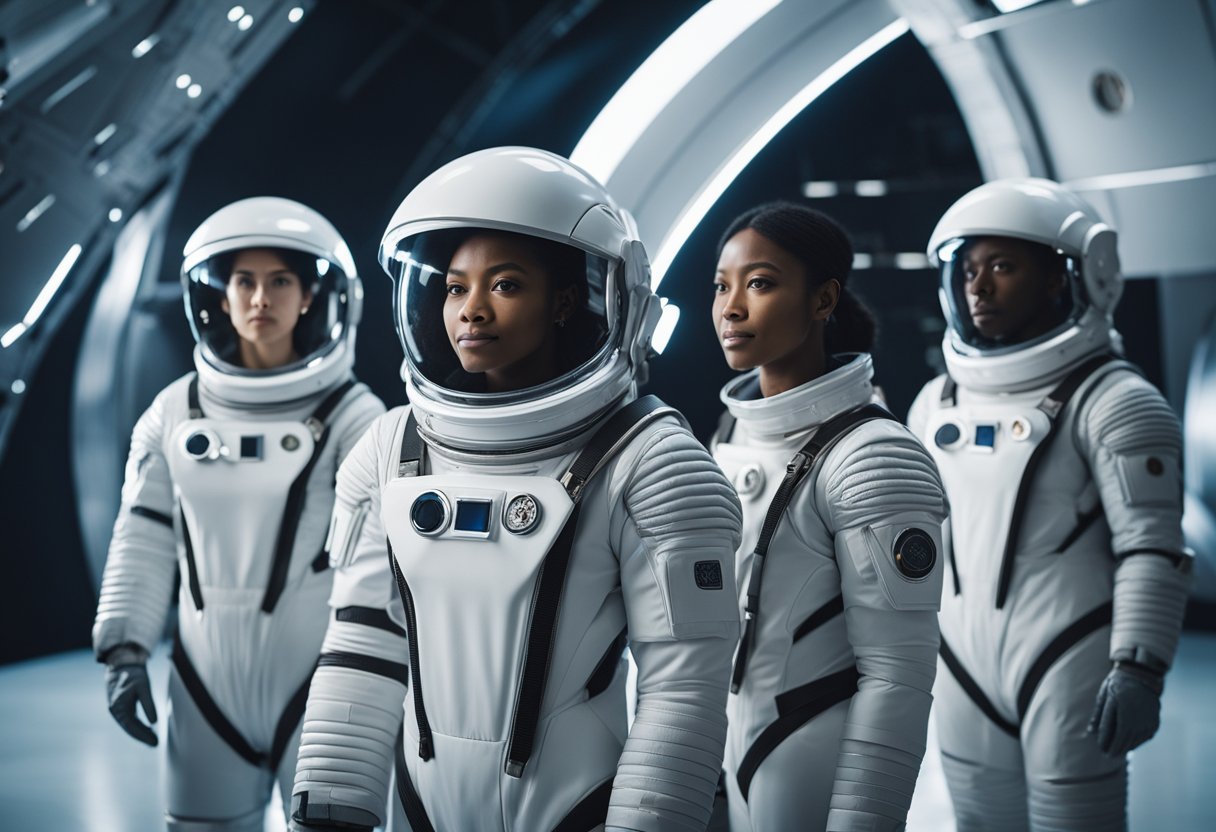
As we examine the shifts in astronaut demographics, we anticipate a more diverse pool of individuals entering the field. In the forthcoming years, population trends suggest an increase in female astronauts, aligning with the current trajectory set by NASA, where gender parity is approaching. Additionally, civilian participation in space missions is projected to rise, diminishing the historical dominance of military backgrounds among astronauts.
Inter-agency differences will likely persist, with NASA’s astronauts tending to be more civilian and diverse compared to their ROSCOSMOS counterparts. The demographic composition of astronauts may also evolve due to the emergence of private and commercial spaceflight entities, such as those documented on SpaceVoyageVentures.com, which promotes space tourism.
We also foresee a broadening of age demographics, considering the advanced training and expertise required for complex missions, such as longer-duration spaceflights and interplanetary exploration. Given these trends, it’s crucial for agencies to adapt their selection and training processes to accommodate a broader range of candidates, ensuring a skilled and versatile astronaut corps for the challenges ahead.
The overall tendency is clear: the future astronaut demographic is shaping up to reflect a broader spectrum of age, gender, and professional backgrounds, making for a richer mix of perspectives and skills that will propel us into the new era of space exploration.
In this section, we cover the most pertinent questions regarding astronaut demographics, providing clarity on gender balance, minority representation, academic backgrounds, and the evolution of diversity in space exploration.
As of 2024, 44% of astronauts are female, and 56% are male, suggesting a significant improvement in gender balance compared to past decades.
NASA has a dynamic roster of astronauts; the exact number can fluctuate as new candidates are selected and others retire. Updated figures are maintained on NASA’s official website.
The percentage of astronauts from minority groups has been increasing, reflective of a broader commitment to inclusivity. Gathering specific recent data involves consulting NASA’s demographic statistics.
Astronauts typically have a strong foundation in STEM fields, with many holding advanced degrees in engineering, biological science, physical science, computer science, or mathematics.
Over time, the ethnic diversity among astronauts has expanded significantly. NASA’s commitment to diversity has seen a wider range of ethnic backgrounds represented in each generation of selected astronaut groups.
Since the first astronaut selections, hundreds have been trained, with the total number continually rising as spaceflight becomes more accessible and inclusive, thanks in part to private-sector involvement like SpaceVoyageVentures.com.